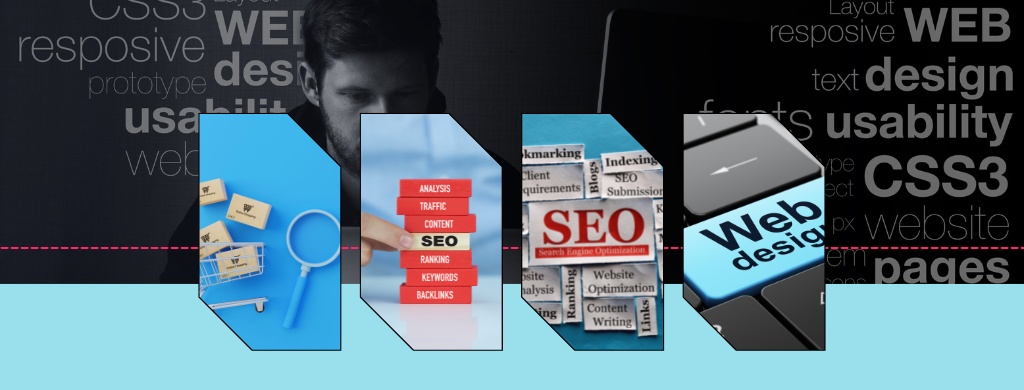In the physical store, consumers are likely to want well-organized easy-to-navigate products with tills marked to make it easy to purchase for design side some Ecommerce UX Tips are listed here. Unfortunately, expectations can often exceed those for online shopping. While today’s consumers are attracted to online shopping sites to enjoy a more effortless shopping experience that can be completed anytime and anywhere, There are many errors that developers and designers of these websites could make that can negatively affect the shopping process and the probability of customers purchasing. It includes:
Shopping carts that are complicated
There are no logos or descriptions of the product.
In 2018 87 percent of all retail purchases (excluding groceries) were conducted online. As online shopping is expected to increase, it is crucial to ensure that e-commerce UX (user experience) design quality is excellent to ensure customer satisfaction and increase sales.
Here are some suggestions, both old and new, to assist you in improving the user experience of your e-commerce website in the year 2019:
Making it easier to shop Shopping Process
With the short attention spans and the enormous expectations of online consumers, an eCommerce site has just the time of a few seconds to impress customers. It was found that 38% of customers are likely to leave a website if its layout and content are ugly. Therefore improving the user experience of a website while keeping the information engaging but clear and clean by using quality images and graphics and including information about the company are crucial in gaining the trust and acceptance of customers that are required to turn the number of visits to sales. Optimization of conversion rates is an excellent way to find any area preventing users from converting.
Tips for eCommerce UX
eCommerce
Mobile E-commerce (or mCommerce) Tab-based navigation is now a preferred method for web developers to quickly get customers to where they must be and to keep their pages organized. This method also prevents the disappearance of information that may be lost in hamburger-style navigation since the information contained in the hamburger structure is undiscovered until clicked. In addition, tabs provide more information you’ll be given upon clicking, which is why the click rates on tab-based websites tend to be higher.
Simplified Shopping Cart
The most effective e-commerce websites offer the best setting for shoppers to shop without difficulty and have numerous methods to simplify your checkout procedure.
As an example, the saving of cart items for those that have gone off the website and have not purchased the things they have in their cart eases the process of returning to the website and placing an order without the need to think about and add every item to their shopping cart over and over repeatedly. Doing this can discourage shoppers from going through the purchase ultimately, So saving cart items will improve the customer experience while also increasing sales.
Implementing PPC Remarketing may also increase the number of visitors to your website since ads can be targeted at customers who have previously visited the website. This service we provide here at Blue Frontier can increase conversion rates significantly – discover more information here.
If you want to go beyond and above to please your customers and to ensure that you make sales you would otherwise miss out on, providing a variety of options for payment other than debit or credit cards is certainly worth the effort. In particular, customers might be more comfortable using PayPal payments. If you do not accept this payment method and they are looking for a comparable product at a competitor’s website, that does. It’s also beneficial to include the logos of payment providers such as VISA or Mastercard on your website to assure customers that you’re using the most trusted payment methods.
Mobile-First Design
The appeal of shopping online is further enhanced when eCommerce websites are made for mobile and clever phone use. According to eMarketer, mobile commerce sales will comprise 54% of total eCommerce sales by 2021. Therefore, by designing your site using a mobile-first strategy, it is possible to ensure that it is available and usable for mobile devices. You will benefit from the growing popularity of shopping on smartphones.
Tips for eCommerce UX
Mobile devices are the ones with the most significant constraints in design, with smaller screens. Therefore, creating your E-commerce website to meet these limitations can result in a more straightforward method of presenting content. For example, it could be helpful if the most effective words in attracting and informing the user are displayed. On the other hand, versions for desktops of e-commerce websites tend to have many more pages and more content. Therefore, a mobile eCommerce site could display images differently (e.g., horizontally rather than vertically) and reduce unnecessary content (using bullets instead of paragraphs). However, to satisfy the requirements of mobile customers and preferences, every item displayed on desktop sites must be easily accessible for browsing and purchasing effortlessly on mobile devices.
Other aspects to consider when creating an eCommerce website for mobile is the possibility of the ability to expand the touch points3 (e.g., buttons and hyperlinks) to match the size of fingers to enhance the user experience and eliminate the frustration caused by your site’s customers not being able to hit the correct touchpoint, or accidentally. The Android Material Design Guidelines suggest a size of at minimum 48 x 48 pixels for touch targets.
Personalization
Personalizing the E-commerce customer experience has gained lots of attention recently. From Amazon’s suggested product recommendations to products you might like to Google providing ads based on searches you’ve made and more, retailers can employ algorithms to analyze customer behavior, identify their preferences, and offer the best service. In addition, giving a personal touch to your website and the content presented to customers can increase purchases since features such as a ‘Recommended For You section let people stay clear of products that aren’t suitable to their preferences and help them find products that are with their choices.
Tips for eCommerce UX
The personalization of content on Ecommerce also creates an impression that the seller takes care of its customers and helps them feel appreciated and taken care of (potentially creating a sense of trust in the brand).
Chatbots
The most important aspect of the quality of user experiences is the customer experience and how an e-commerce site assists its customers. One of the internet’s most popular aspects of customer service is the use of chatbots. Chatbots are AI-powered software that can communicate with customers, provide them assistance, and in certain instances, accept safe payments. In addition, Chatbots can provide round-the-clock 24/7 support since they are not limited to the same hours of operation that human service personnel. Chatbots and their chat windows usually appear in the lower corner of website pages, allowing users to click quickly on them to seek out the assistance they need. Suppose a website has chatbots that are ready to use. In that case, users can typically converse with chatbots via an animated window that appears on most pages without opening an additional window or redirecting them away from the current page.
Chatbots can be designed to respond to commonly asked questions; however, they cannot help with more complicated problems to which they’ve not been exposed before. Chatbots aren’t a substitute for traditional customer support methods (i.e., phone calls, for instance). However, they offer an automated way to answer customer inquiries speedily and efficiently, allowing for an amount of customer service 24/7.
Tips for eCommerce UX
Augmented Reality
The increasing use of virtual and augmented technologies in E-commerce, like Ikea’s AR app, called Place, allows shoppers to be able to experience the products (e.g., by looking at the way they are positioned within their own homes) without needing to go to the store is a great way to make shopping online more enjoyable for customers. For example, in the Ikea Place app, customers can use smartphone cameras to overlay homeware items from Ikea on their homes and visualize how their furniture would look in their homes4. Although it’s an app, not an element on their website, Sites can guide users to an app that can make use of AR technology or incorporate the function into their mobile website that allows for the benefit of smartphones cameras in a manner that’s not as easy to achieve when using a desktop website.
A survey conducted in 2016 revealed seven percent of customers would prefer to purchase from an online retailer regularly if they offered AR services. It is understandable since AR allows consumers to better organize their purchases based on what they see within specific areas. It may also decrease the requirement for returns.
Tips for eCommerce UX
Clever Keyword Targeting
When creating an eCommerce site and curating its content, it is essential to conduct competitor research to identify the most effective keywords to choose to get a top ranking on search engines and ensure that the correct audience is targeted. For instance, if your website sells used textbooks and intends to attract students, it’s essential to select keywords that are relevant to the product and its customers, such as “Textbooks for Students.”
Tips for eCommerce UX
Another method worth considering is to take note of grammatical or spelling errors. For instance, when looking to find sterling silver earrings, individuals may need to correct things like sterling or silver; therefore, it is crucial to include misspellings on the list of keywords that you are targeting.
A Final Note
Enhancing the E-commerce user experience is done in a variety of ways, for example, using tried and true strategies of keyword targeting to boost the visibility of your site or if you’re willing to adopt the latest technologies such as chatbots and AR to provide greater flexibility and choices to your customers. In 2019, it was essential to keep up with the latest trends to understand which eCommerce design and development methods will best benefit your business and your customers.
Every year, new ways and concepts to create websites for shopping online. To ensure your website is current and up to date with customers’ expectations (or even exceeding those expectations), looking at competitors’ websites and studying current or anticipated trends is the best method of staying at the forefront of the eCommerce game.
UX Desing Reference website






Leave a Reply